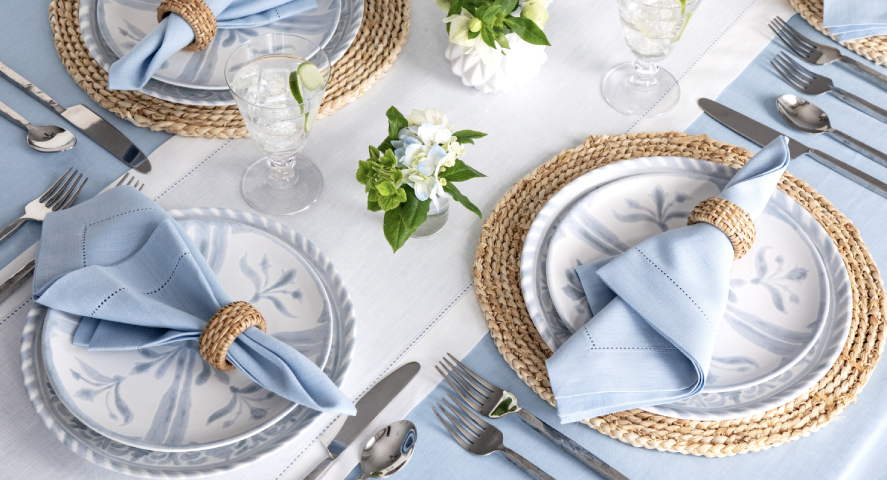A gorgeous fabric which keeps us warm in winter and cool in summer, linen is also incredibly sustainable. And that’s over and above the fact it feels and looks great too.
Why linen is eco-friendly
- It’s biodegradable. There are various reasons why linen is so eco-cool. Firstly, the fabric itself, when not dyed, is biodegradable, so there’s none of it lying around for decades after we’ve disposed of it.
@tinyecohomelife: “Unlike synthetic fibres, such as polyester, which are produced from fossil fuels, linen comes from the flax plant. This is a fully renewable natural resource that is also hypoallergenic…As it is not made from a type of plastic, this also means that linen doesn’t release microplastics into the waterways when washed.”r
- It’s moth-resistant. And we’ll have it for decades anyway because it’s the type of fabric that actually looks and feels better with use (i.e. it becomes softer and more pliable when washed). Linen is also moth resistant so there is no chance of us finding big holes in our beautiful linen curtains, bedspread or tablecloths – thank goodness!
- It’s natural. Linen is produced by using the fibres from flax plants. Flax grows in abundance in certain climates (those that aren’t too warm or cold, such as Ireland, Scotland, The Netherlands and parts of the US).
- And it grows quickly and in large quantities too. Not only that, but flax is an extremely effective plant. All of the flax plant can be used, so nothing is wasted. Linseed oil and flaxseed oil are produced from the plant. The first is used to help preserve wood (especially cricket bats) and the second to add to foodstuffs to ensure us humans get enough omega 3 in our diets.
- It’s durable. A linen tablecloth or bedspread can easily last up to three decades. It’s why you’ll find many bedspreads or throws having been passed down through the generations and still looking good. And talking of years gone by, linen actually dates as far back as Egyptian times. That’s 8000BC to you and me. We know this because it was used to wrap bodies as part of the mummification process.
- It’s versatile. Linen isn’t just exclusively for fashion. It can be used in many settings around the home too. It’s ideal for curtains, table cloths, bedding, tea towels, and there’s even bits of it in a dollar bill (now, not many people know that).
Not all linen is eco-friendly
It’s the processes that are added to the flax plant and linen fabric that can take away from its eco-friendliness. For instance, although flax can grow without the use of pesticides and other chemical nasties, it doesn’t always happen that way.
Also, when dye is added to linen, the fabric isn’t quite as biodegradable as previously. In its natural colouring linen has a neutral colour scheme i.e shades such as ecru, cream, beige etc. Don’t be fooled by white linen though – that’s not its natural color and, in fact, means that the fabric has been bleached.
You can tell if the linen you are about to purchase is sustainable as it will be sold with an organic certification label.



















